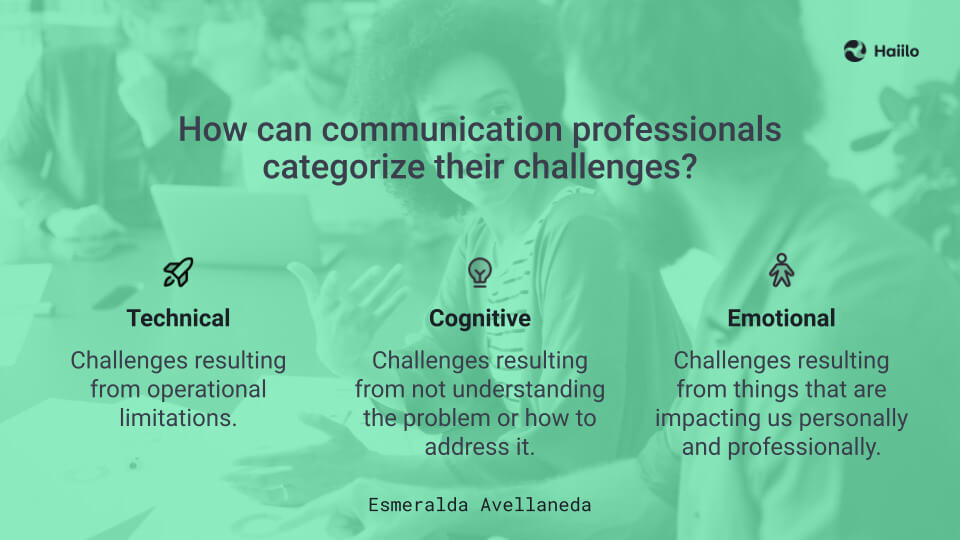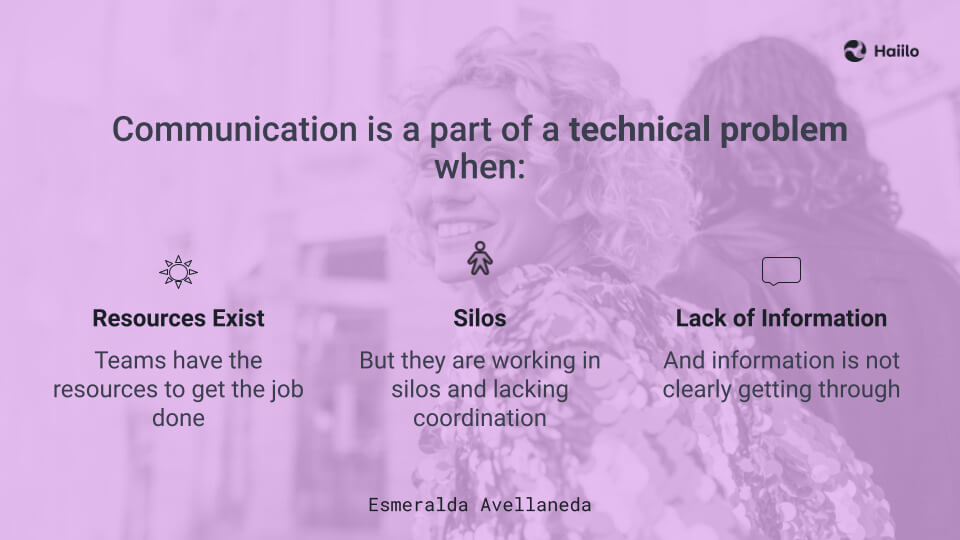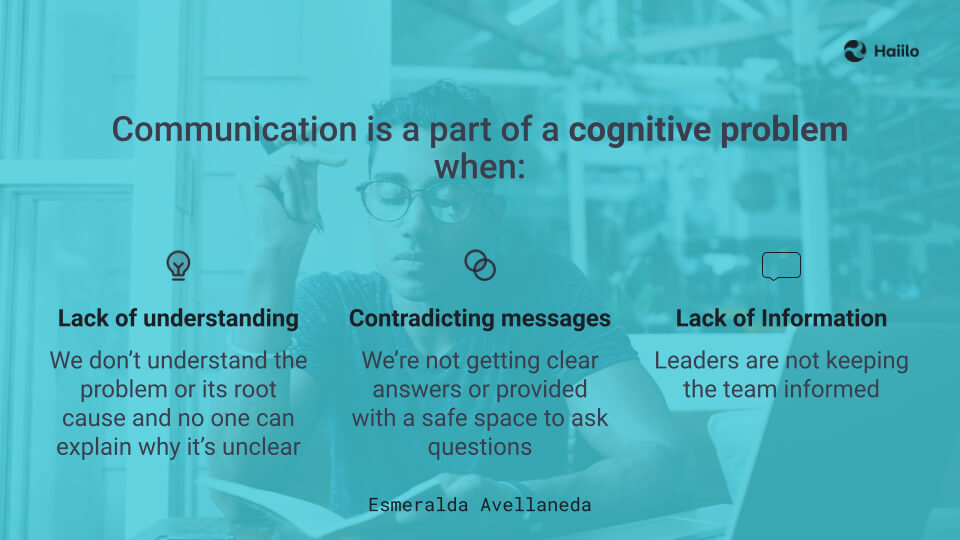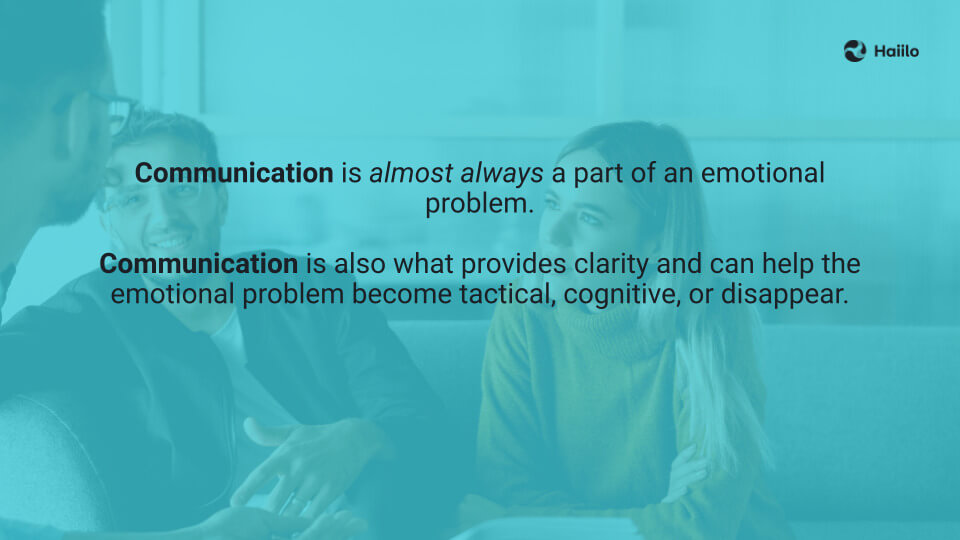Not long ago, I stumbled upon an insight that has become my compass to navigate various situations. The revelation came in the shape of a question:
Is the obstacle technical, cognitive, or emotional?
For me, this was a game-changer. We tend to lump all our problems in the same box, often assuming they share a common root cause. However, even if the challenges occur within the same team, context, or project, it doesn’t mean they all stem from the same source. When faced with such ambiguity, our biases can easily cloud our judgment and hinder our ability to address the core issue.
💡Check out Smart Working: Definitions, Characteristics, and Benefits
Create content up to 10x faster with Haiilo AVA.
Let’s dive into a real-world scenario of what this might look like. Imagine a strategic plan needs to be developed, and the deadline is tomorrow. You ask the team if they can meet that timeline, but they say there’s not enough time. That’s a classic example of a technical problem. So, you help them clear the agenda, reschedule meetings for tomorrow, and add extra hours to the project to get the job done. Problem solved, right? Not quite.
The day ends, but the presentation still needs to be finished. How can that be? Perhaps those tasked with putting the presentation together were never entirely sure what should be in it, so the problem isn’t time (a technical issue). The real problem is knowledge and/or experience (a cognitive problem). Inadvertently, we’ve been applying a technical solution to a cognitive problem all along, and now we’re grappling with two issues.
🗣️ Read on to learn about What is Team Communication, Why it Matters, and How to Get it Right
Let’s categorize our challenges. ⬇️

Technical obstacles have to do with operational limitations. These tangible factors can physically constrain us, such as a lack of time, money, space, resources, something broke, or the economy changed. Some of these are within our control; some are not. When we have control over these constraints, we can seek technical solutions, such as working in sprints, fundraising, relocating to a more suitable space, and more.
Cognitive obstacles have to do with our understanding of the problem. Sometimes, our roadblock stems from needing to grasp the issue. If we don’t fully comprehend it, we can’t propose adequate solutions or appoint the right person to solve it.
Lastly, emotional obstacles can be deeply personal and often overlooked in professional settings. We usually don’t make room for them because we don’t consider them inside the professional realm. But they are genuine, and they can affect all of us differently. Emotional obstacles can encompass feelings of pressure, self-doubt, anxiety, or fear. Without acknowledging or addressing them, they’ll continue to present a problem.
🔗 Get connected: Top 5 Benefits of Connected Workplaces and How to Create One
🛑 Quick check-in: Does any of this resonate with your daily work? Identify and tag the obstacles you face today under one of the three categories: technical, cognitive, or emotional. The first problem we often encounter is not knowing (a cognitive problem 😛). Therefore, we need to open a space to untangle it. It’s a priority.
Now, to the fundamental question we came to answer: how do we know our problem is a communication problem?
We can determine a proper solution once we know which of the three our problem is (if we don’t, we can’t possibly do this exercise). In that process, we can understand if communication is part of the problem/solution.
🔎 Keep Reading: Measuring Success: Unveiling the Power of Metrics in Your Communication Strategy

When it comes to technical problems…
The solution should be easy to determine. The Internet crashed. We don’t have the resources. There is no expert to handle it. The team is oversaturated with tasks. Etcétera, etcétera. Now, IF the resources exist, and the problem is that teams work in silos, lack coordination, information fails to get through, then there’s a communication problem. It might seem like a tactical and down-to-earth challenge, but in reality, it’s a communication problem. In many instances, we will likely find that we lack proper communication channels, a clear strategy, a cohesive speech, or people assuming an informative role.
📖 Learn more: 9 Effective Ways to Break Down Silos in Your Organization

When it comes to cognitive obstacles…
It is all about understanding. Sometimes, we don’t understand the problem because we’re neither experts nor sure about its root cause. If something is failing because of something we don’t know about, it can be challenging to figure it out. We don’t know what we don’t know.
Other times, it’s a lack of experience. We may recognize that a team needs to be reorganized, but we’re unsure about the best approach or reasons behind it. Or, perhaps we’ve realized a strategy is not working, but we struggle to identify a solution or propose a fresh perspective. This requires training and development more than communication.
Now, if the reason we don’t understand is that the problem is unclear and no one can elucidate it, that there are contradicting messages or conflicts of interest, that there is no safe space to ask questions, or that a person lacks the ability to keep their team informed, we have a communications problem.
👂Listen up: Employee Listening: Why You Should Listen to Your Employees

When it comes to emotional obstacles…
It gets a little trickier. Emotional issues can be something at a personal level, an organizational level, a contextual level, or all of the above. But it almost always is a communication problem.
The difference is that when it’s a particularly personal case, the solution (not interpreted as a definite end to the problem, but an understanding of the best path to take) comes from communication. Effective communication provides clarity and can help the emotional problem become tactical, cognitive, or, better yet, make it disappear.
Often, context is the key to understanding an emotional issue. Suppose the organization is going through a rough patch, the country is going through a precarious moment, or something happened within the team. In that case, it is essential to make room for communication. This provides space to let out steam, understand how it can affect our work, and separate this problem from the rest so that we’re not confusing it with something else and creating more chaos.
✨Learn more: The Importance of Emotional Intelligence in the Workplace
One last note: it’s a multifaceted approach will need to come into play when the issue is at an organizational level. It likely involves strategic communication solutions, cultural values to develop, and internal processes to analyze, all within the communication realm.
So, the next time you encounter a roadblock on your to-do list or find yourself, your team, or your organization at a standstill, remember to ask yourself this crucial question: What type of problem is it? You can start your problem-solving journey from there.
🤖Did you know? Haiilo Continues to Lead the Evolution of Generative AI in Employee Communications
About the author
Esmeralda Avellaneda is an expert in putting things into words. She taints all of her work with personal details and all of her personal life with work. One picks their poison, and she lives in search of underlying concepts, stories, and insights that both people and organizations hide. She builds the narratives and strategies that turn those isolated assets into something meaningful.


![Haiilo Blog Banners [Template]](https://haiilo.com/wp-content/uploads/2023/10/Haiilo-Blog-Banners-Template.jpg)






